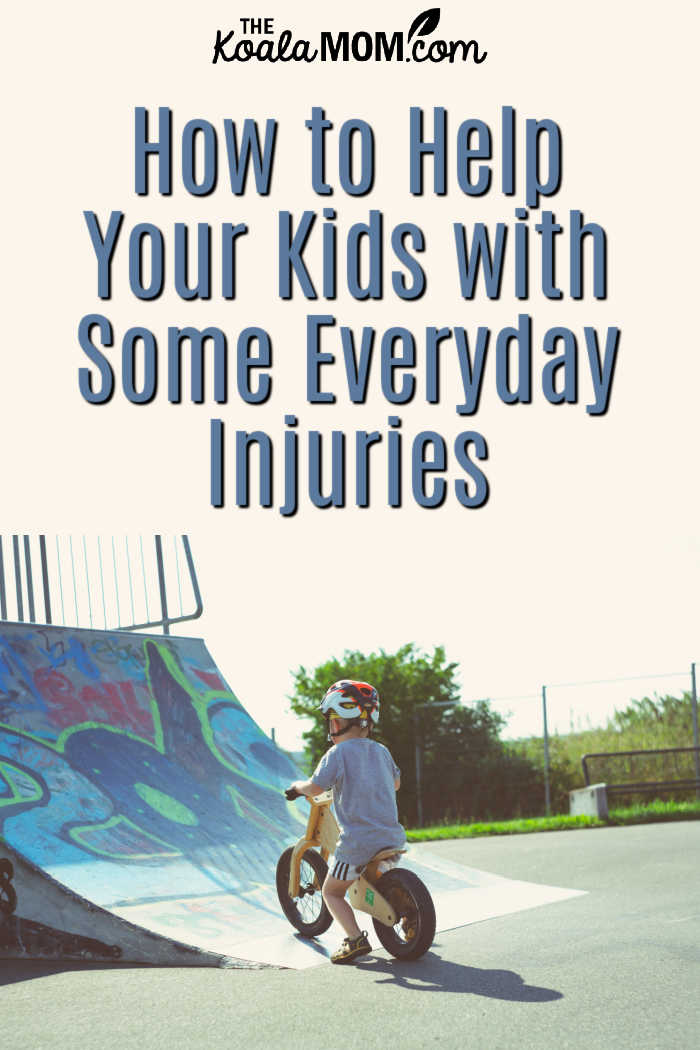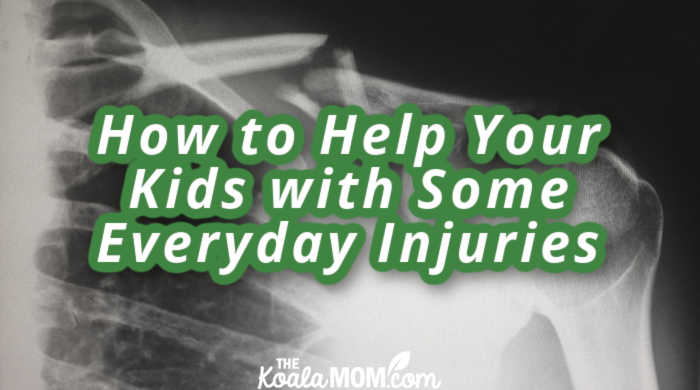Accidents happen, and sometimes kids get injured. It’s important to know how to properly help them when these accidents occur. In this blog post, we will provide you with information on how to help your child with some common injuries. We will cover everything from cuts and scrapes to broken bones and concussions. So, whether your child is hurt while playing outside or slips and falls in the kitchen, read on for some helpful advice!

This post contains affiliate links; as an Amazon associate, I earn from qualifying purchases.
Cuts and scrapes
Cuts and scrapes are some of the most common injuries kids suffer. If your child has a cut or scrape, it’s important to clean the wound right away. The professionals from SaveRite Medical recommend using pressure to stop the bleeding and then proceeding to clean and bandage the wound. Wounds can be cleaned with soap and water, an antibacterial wipe (if you’re out of the house), or with hydrogen peroxide (if you’re worried about infection from whatever caused the scrape).
If your child has a minor cut or scrape, you can usually treat it at home. However, if the wound is more than a quarter inch deep or if it is bleeding heavily, then you should take your child to the doctor.
Inconvenient but not serious, a cut or scrape will usually heal on its own within a week or two. To help speed up the healing process and ensure your child is comfortable, you can apply an antibiotic ointment and keep the wound covered with a clean bandage. For additional support, consider consulting Burt’s pediatric compounding pharmacy, which specializes in customized treatments tailored to your child’s needs. Always keep an eye out for signs of infection, such as redness, swelling, or unusual discharge, and contact your doctor if you notice any of these symptoms.
Broken bones
Broken bones are another common injury in kids. If you think your child has a broken bone, it’s important to seek medical attention right away. In the meantime, you can help by immobilizing the injured limb. Use a splint or sling to keep the limb from moving and apply an ice pack to the area to reduce swelling. Once your child is seen by a doctor, they will likely need to wear a cast or have surgery to repair the break.
Concussions
Concussions are a type of brain injury that can occur after a blow to the head. As children are frequently bumping their heads, this is a common concern parents face. Symptoms of a concussion include headache, dizziness, nausea, vomiting, and confusion. If your child is displaying any of these symptoms, he or she should see a doctor immediately.
Swollen joints
Swollen joints are a common problem in kids, especially during growth spurts. If your child’s joints are swollen, it’s important to rest the joint and apply ice to the area. I rub my girls’ legs with ArnicaGel and give them some Arnica tablets, as these both help to alleviate muscle and joint pain. You can also give your child over-the-counter pain medication such as ibuprofen to help reduce swelling and pain.
Open wounds
Open wounds are injuries in which the skin is broken. They can be caused by cuts, scrapes, bites, or other trauma. If your child has an open wound, it’s important to clean the wound right away and apply a bandage. You should also seek medical attention if the wound is more than a quarter inch deep or if it is bleeding heavily.
If your child has an open wound, it is important to clean the wound right away and apply a bandage. You should also seek medical attention if the wound is more than a quarter inch deep or if it is bleeding heavily. Open wounds can be painful and may take several weeks to heal.
Insect bites
Insect bites and stings are a common problem in kids, especially during the summer months. If your child is bitten by an insect, it’s important to wash the bite area and apply a cold compress to the area. If your child was stung by a bee or wasp, check that the stinger is no longer in their skin.
For itchy bites (such as bee and mosquito), apply an afterbite cream such as Dapis Gel or Benadryl to help stop the itching and pain. You can also give your child over-the-counter pain medication such as ibuprofen to help reduce swelling and pain.
For other bites, such as horsefly or leech, if the bite is more than a quarter inch deep or if it is bleeding heavily, then you should take your child to the doctor.

As you can see, there are a few things you can do to help your child if he or she suffers from a common injury. By following the tips above, you can reduce swelling, pain, and discomfort. However, it’s always best to seek medical attention if you think your child has a serious injury. With the right treatment, most injuries will heal quickly and without any complications.

No Responses Yet